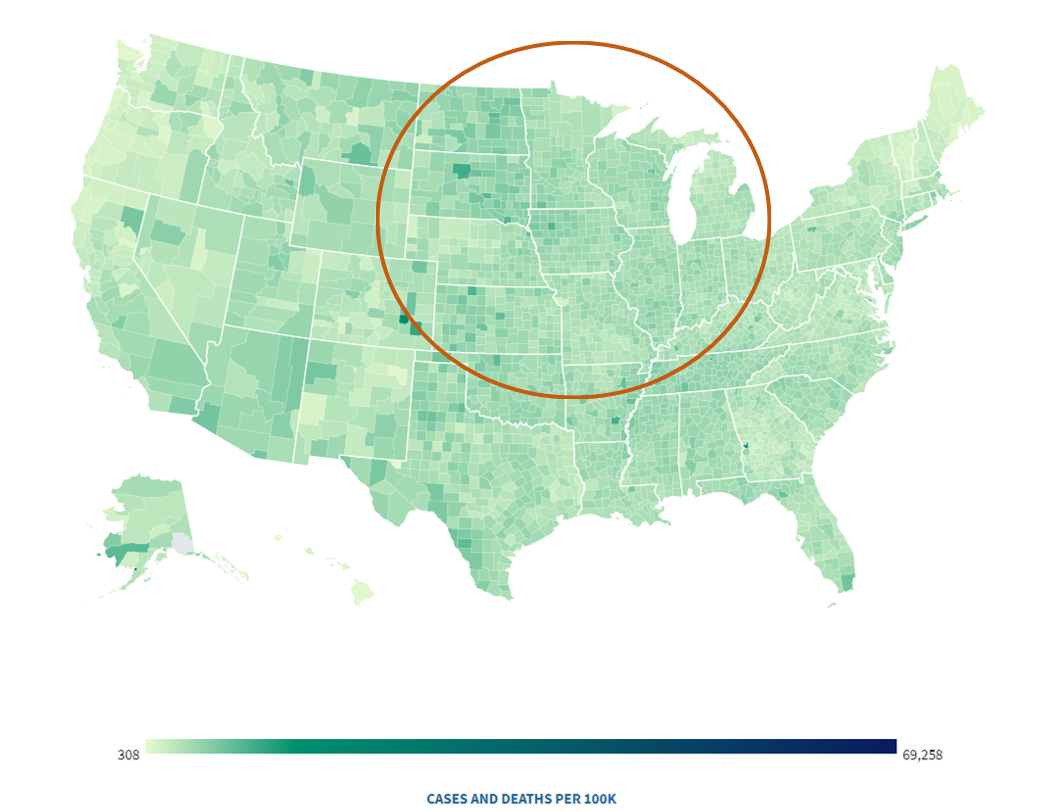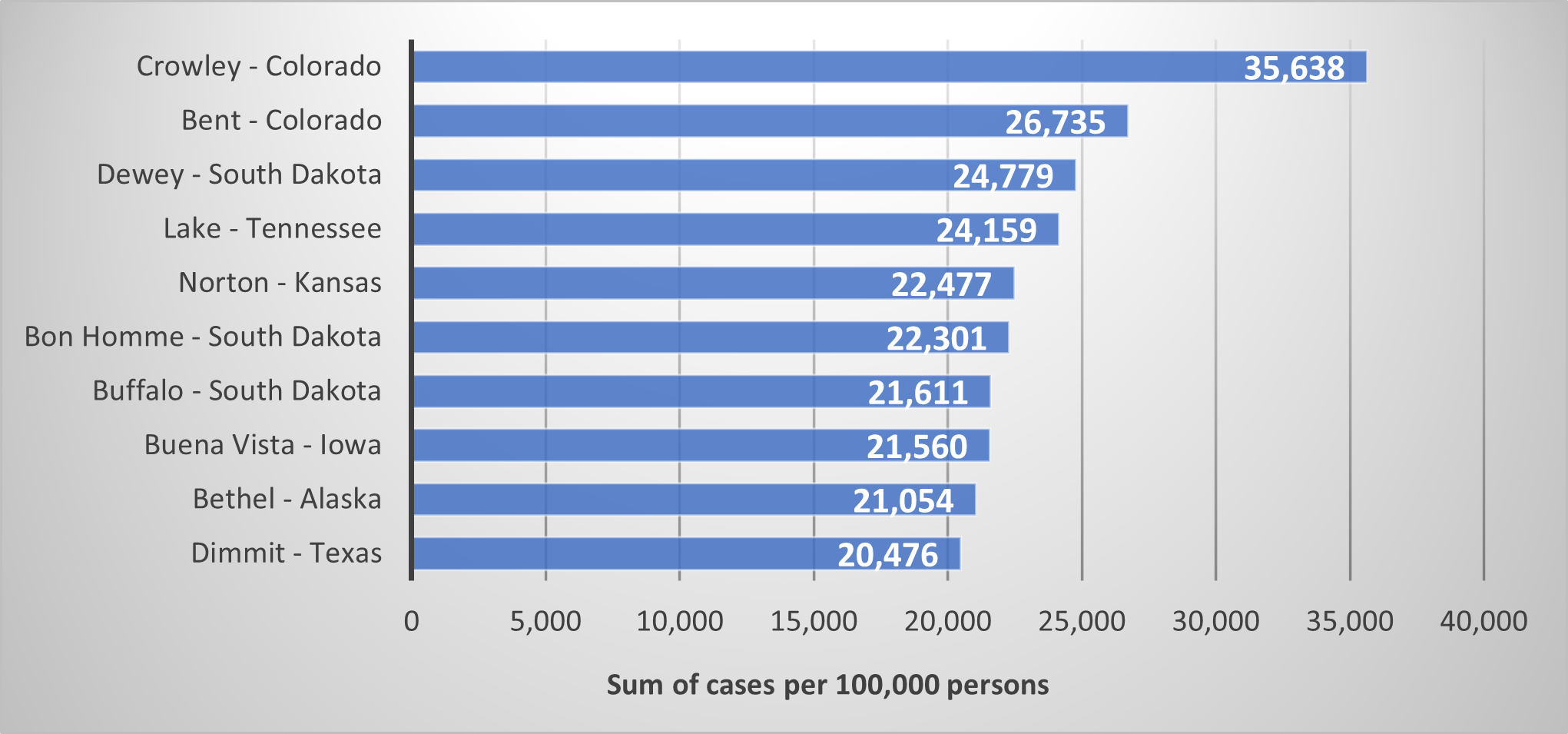About 46 million Americans live in rural areas, which face distinctive challenges during the COVID-19 pandemic. Centers for Diseases Control and Prevention (CDC) regularly release information about COVID-19 cases in rural and urban counties in the U.S. Data are reported by urbanicity that is defined as metropolitan and non-metropolitan, based on the 2013 National Center for Health Statistics (NCHS) Urban-Rural Classification Scheme for Counties. NCHS data systems are often used to study health differences across the urban-rural regions.
In short, NCHS has developed a six-level urban-rural classification scheme for U.S. counties and county-equivalent entities. The most urban category consists of ‘central’ counties of large metropolitan areas, and the most rural category comprises non-metropolitan ‘noncore’ counties.
Based on CDC, early in the COVID-19 pandemic, from mid-March to mid-May 2020, COVID-19 incidence (cases per 100,000 population calculated using 2019 U.S. census population) was highest among residents of large central and large fringe metropolitan areas. In mid-April, the incidence in these large metropolitan areas declined and then increased similarly among all urban-rural areas. In September 2020, COVID-19 incidence steeply increased and remained highest among medium/small metropolitan areas and micropolitan/noncore areas, indicating increased spread into rural communities. In October 2020, the weekly incidence was increasing steadily among all urban-rural areas.
Figure 1 displays numbers of reported COVID-19 cases and deaths per 100,000 inhabitants by all counties in the U.S. The North Central Region is circled in red and three states within the Region – North Dakota, South Dakota, and Kansas – declare counties with high numbers of cases and death per 100,000 county’s inhabitants.
Figure 1. Reported COVID-19 cases and deaths per 100,000 inhabitants by all counties in the U.S.

Source: USA Facts
CDC adverts to long-standing systemic health and social inequities that have put some rural residents at increased risk of getting COVID-19 or having a severe illness. In general, people living in rural America tend to have higher rates of cigarette smoking, high blood pressure, obesity, and less access to healthcare, negatively affecting health outcomes. They are also less likely to have health insurance. Rural communities also show increasing racial and ethnic diversity. Racial and ethnic minority groups are at higher risk of getting COVID-19 and having severe illnesses. Moreover, rural areas can face different health challenges depending on their location.
Figure 2 shows the number of reported COVD-19 cases on a weekly basis in rural counties based on the NCHS methodology described above.
Figure 2. Number of reported weekly COVID-19 cases in rural counties

Source: Centers for Diseases Control and Prevention; Exported on 4/26/2021
Note: Darker colors imply more cases
Figure 3 corresponds with Figure 2 and focuses on the rural counties with the highest COVID-19 incidence per 100,000 inhabitants. The top ten rural counties include five counties from North Central Region: Dewey, Bon Homme, and Buffalo in South Dakota, Norton in Kansas, and Buena Vista in Iowa.
Figure 3. Rural counties with the highest COVID-19 incidence per 100,000 persons

Source: Centers for Diseases Control and Prevention; Exported on 4/26/2021
Many rural communities are considered highly vulnerable, according to CDC’s Social Vulnerability Index (SVI). The SVI includes factors such as housing, transportation, socioeconomic status, housing, race and ethnicity, and language, which can help define strategies to support communities during and after COVID-19.
Rural communities also have strengths, assets, and protective factors that can be used to tailor activities and design policies to reduce the risk of COVID-19 community spread and
improve the general health of rural populations, which may minimize the severity of COVID-19.
Author: Zuzana Bednarikova, zbednari@purdue.edu
Dr. Zuzana Bednarikova is a Research and Extension Specialist at NCRCRD.
